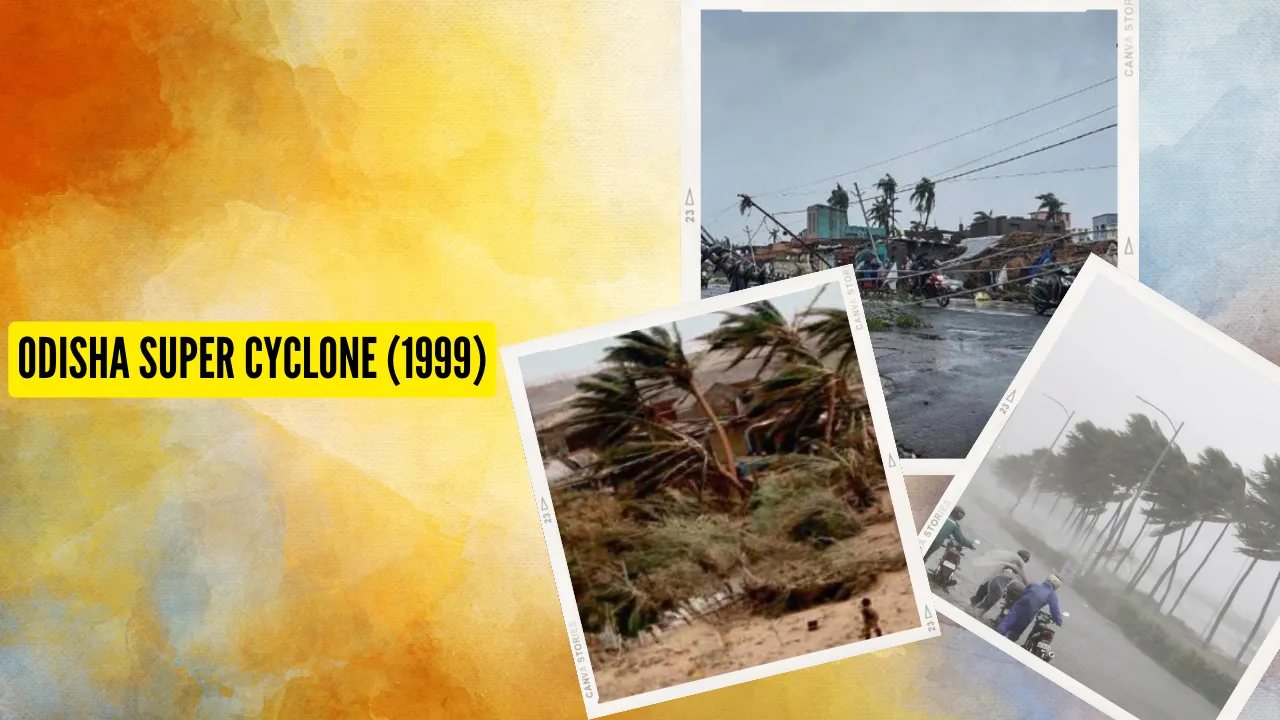Odisha Super Cyclone1999
The Odisha Super Cyclone was one of the deadliest natural disasters to hit India in recent history. On October 29, 1999, a powerful tropical cyclone formed over the Bay of Bengal and intensified rapidly, eventually becoming a Category 5 super cyclone (Cyclone 05B)with wind speeds of up to 260 kilometers per hour. The cyclone hit the region with devastating force, causing widespread destruction and loss of life. It is considered one of the strongest tropical cyclones ever recorded in the North Indian Ocean.
Formation and Intensity
The cyclone originated from a tropical disturbance in the South China Sea in late October 1999.
It gained strength as it moved westward, intensifying into a super cyclonic storm with sustained wind speeds reaching 260 km/h (160 mph).
Landfall
The super cyclone made landfall near the city of ParadIp in Odisha state, causing widespread damage and destruction. The storm surge caused by the cyclone led to massive flooding along the coast, submerging entire villages and towns and leaving many people stranded.
Impact
The cyclone caused widespread devastation in the coastal districts of Odisha, affecting millions of people.
Strong winds, heavy rainfall, and the storm surge led to the destruction of homes, infrastructure, and agriculture. The storm surge, in particular, resulted in significant flooding along the coastline.
Casualties and Displacement
The Odisha Super Cyclone resulted in a staggering loss of life. The official death toll was estimated to be around 10,000, with many more people reported missing and millions being affected. The cyclone caused extensive damage to property and infrastructure, including homes, roads, bridges, and power and communication networks. Hundreds of thousands of people were displaced from their homes, and the economic impact on the region was severe.
Response and Recovery
The cyclone prompted one of the largest peacetime evacuations in history, with over a million people evacuated from vulnerable areas. In the aftermath of the cyclone, the government of India launched a massive relief operation, mobilizing thousands of officials and emergency responders to affected areas.
The Indian government, along with various national and international organizations, played a crucial role in providing relief and aid to the affected population. The government set up relief camps and distributed food, water, and other essential supplies to those in need.
The recovery and reconstruction efforts in the aftermath of the cyclone were extensive and required long-term rehabilitation.
Lesson Learned
The Odisha Super Cyclone highlighted the importance of early warning systems, disaster preparedness, and efficient evacuation plans in minimizing the impact of such natural disasters.
Subsequent cyclones in the region have seen improved preparedness and response measures based on the lessons learned from the 1999 disaster. The Odisha Super Cyclone remains a tragic event in the history of natural disasters, but it also serves as a case study for understanding and improving disaster management strategies.
The Odisha Super Cyclone was a wake-up call for India and the world about the growing threat of extreme weather events due to climate change. In the years since the super cyclone, India has made significant progress in improving its disaster preparedness and response capabilities. The government has invested in early warning systems, improved infrastructure, and strengthened emergency response teams. This has helped the country better manage and mitigate the effects of cyclones and other natural disasters. However, more needs to be done to address the root causes of climate change and reduce the risk of extreme weather events. This can include reducing greenhouse gas emissions, promoting renewable energy, and adopting sustainable development practices.
Conclusion
Odisha Super Cyclone was a devastating natural disaster that caused immense human and economic loss. While India has made strides in improving its disaster preparedness and response, the threat of extreme weather events due to climate change remains a significant challenge. It is essential for governments, businesses, and individuals to take action to address climate change and build more resilient communities that can withstand the impacts of such events.

